When families enroll in CalFresh, it opens the door to more than groceries.
Formerly known as food stamps, CalFresh is a vital part of the social safety net. Despite helping thousands stay above the poverty line, California’s participation rate is just 81 percent, ranking 31st in the country. To change this, the Food Bank is working to improve the system through outreach, advocacy, and policy. We co-sponsored AB 518, a new state law that requires California to identify people who are eligible but not enrolled and develop new ways to reach them to get them enrolled.
Last year, our team helped more than 2,400 people apply for CalFresh, unlocking $6.5 million in benefits for households in San Francisco and Marin. That’s money our neighbors can use to buy the food they need enabling families and communities to thrive.
CalFresh Puts Food on the Table… and Diapers in the Closet
In addition to enabling our participants to put food on their tables, CalFresh enable recipients to access other important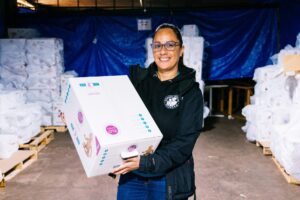 benefits. For families with young children, the cost of diapers adds up quickly. Too often, parents are forced to choose between diapers and food. That’s where CalFresh, the Food Bank, and community partners like Homeless Prenatal Program (HPP) come together. The San Francisco Diaper Bank, a partnership between the SF Human Services Agency and family resource centers like Homeless Prenatal Program, offers a free monthly supply of diapers to CalFresh families with children under two. At HPP, a long-standing Food Bank partner, families can pick up diapers and healthy groceries in one stop. It’s a model of seamless support that strengthens the safety net and addresses the root causes of hunger.
benefits. For families with young children, the cost of diapers adds up quickly. Too often, parents are forced to choose between diapers and food. That’s where CalFresh, the Food Bank, and community partners like Homeless Prenatal Program (HPP) come together. The San Francisco Diaper Bank, a partnership between the SF Human Services Agency and family resource centers like Homeless Prenatal Program, offers a free monthly supply of diapers to CalFresh families with children under two. At HPP, a long-standing Food Bank partner, families can pick up diapers and healthy groceries in one stop. It’s a model of seamless support that strengthens the safety net and addresses the root causes of hunger.
Outreach That Meets People Where They Are
We know that CalFresh is a proven strategy in reducing food insecurity. But stigma, immigration concerns, and a complex application process keep far too many people in San Francisco and Marin from getting help.
That’s why the Food Bank’s CalFresh Outreach team works closely with partners to provide outreach, education, and one-on-one support to enroll more eligible residents.
“The Food Bank’s free grocery programming is designed to support low-income residents of San Francisco and Marin to supplement their food budgets,” says Liliana Sandoval, our Senior Director of Programs and Outreach. “Starting CalFresh outreach at the Food Bank was an obvious choice.”
Bringing CalFresh into the Food Bank’s mission was a natural step, Liliana says, since even a small benefit can make a difference.
“Folks can attend a pantry and receive CalFresh,” she explains. “Even if they only get the minimum monthly benefit, they can buy food that isn’t available at the pantries. Ultimately, we want people to have a bit more ease in their daily lives.”
Building Confidence, Busting Myths
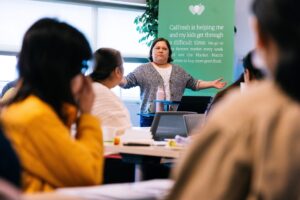 One way we strengthen the region’s CalFresh outreach is by providing training opportunities for our partners who make expanding CalFresh enrollment possible.
One way we strengthen the region’s CalFresh outreach is by providing training opportunities for our partners who make expanding CalFresh enrollment possible.
In March 2025, the Food Bank’s CalFresh Outreach Team hosted its first in-person training since the pandemic. Staff from community organizations across San Francisco and Marin were excited to come together to deepen their understanding of the CalFresh application process and build skills to better support participants.
“Community means more than ever right now,” Liliana said at the start of the day. “We’re all here to learn from each other.”
The training covered everything from household composition and income rules to immigration-related eligibility and how to help people navigate BenefitsCal, the website where people can apply for and manage their public benefits Partners also learned about new updates, like chip-enabled CalFresh cards that reduce fraud, and additional benefits like discounts on museums, internet, and more.
Partners who joined the training shared real fears their clients have, especially older adults, immigrants, and students. Some talked about legal permanent residents who were afraid to apply, worried it could affect their families.
“There’s so much fear out there,” Liliana said. “And that’s why we’re doing this.”
Another one of the myths that Liliana and her team are working to dispel is around who is eligible for CalFresh and who isn’t. Many people assume they don’t qualify, while others have tried before and stopped because the process was too difficult or unclear.
She wishes more people understood what CalFresh is really about: it’s a tool for dignity, stability, and choice.
“There is no nutrition restriction on what folks can buy, and most grocery stores, farmers markets, and big chain stores accept CalFresh,” Liliana says. People can choose what they want to eat and where to shop. Everyone needs food, and that’s why we are here — to help folks access it.”
As CalFresh Awareness Month continues, the Food Bank’s Outreach Team is out in the community nearly every day, visiting schools, events, and pantries to raise awareness and enroll new participants.
It’s a busy season, but the mission remains the same: meet people where they are, walk with them through the process, and open the door to resources that make things a little more manageable for families.
And connecting folks to CalFresh can open doors to many other cost-saving resources they might not expect. Through CalFresh, people may also be eligible for:
- Free or low-cost cell phone service through the federal Lifeline program — sometimes even a free phone
- Affordable internet from major providers, with plans starting as low as $10 per month
- Half off Amazon Prime through Prime Access
“Life is already so complex, and our low-income community members have to navigate so much just to meet their basic needs,” Liliana says. “Our team loves reminding partners about these added benefits, because CalFresh isn’t just about food. It’s about making everyday life a little easier.”


 Amid the backdrop of the largest cut to food assistance in our nation’s history, Food Bank staff, Food Policy and Advocacy Coalition (Food PAC) members, and their loved ones came together on July 11 to celebrate the graduation of our inaugural Food PAC cohort.
Amid the backdrop of the largest cut to food assistance in our nation’s history, Food Bank staff, Food Policy and Advocacy Coalition (Food PAC) members, and their loved ones came together on July 11 to celebrate the graduation of our inaugural Food PAC cohort. A lot has changed since Carolyn and Stephen started giving to the Food Bank in 1995, but their commitment to making an impact — and Carolyn’s passion for smart financial giving — hasn’t wavered.
A lot has changed since Carolyn and Stephen started giving to the Food Bank in 1995, but their commitment to making an impact — and Carolyn’s passion for smart financial giving — hasn’t wavered.
 The timing couldn’t be more critical. Since the pantry opened in late January, the neighborhood’s
The timing couldn’t be more critical. Since the pantry opened in late January, the neighborhood’s  For many, including a resident named John, opening day was their first time visiting a food pantry. John moved to San Francisco from Kenya in December and discovered the pantry through senior education classes at the YMCA. Now living with his daughter and two grandchildren, he says it’s already making a difference in helping his family afford groceries. “The bills, the cost of living — it goes down,” he says, relieved that the family has one less burden. John says he’s thankful to bring home fresh, healthy food without the stress of rising prices.
For many, including a resident named John, opening day was their first time visiting a food pantry. John moved to San Francisco from Kenya in December and discovered the pantry through senior education classes at the YMCA. Now living with his daughter and two grandchildren, he says it’s already making a difference in helping his family afford groceries. “The bills, the cost of living — it goes down,” he says, relieved that the family has one less burden. John says he’s thankful to bring home fresh, healthy food without the stress of rising prices.

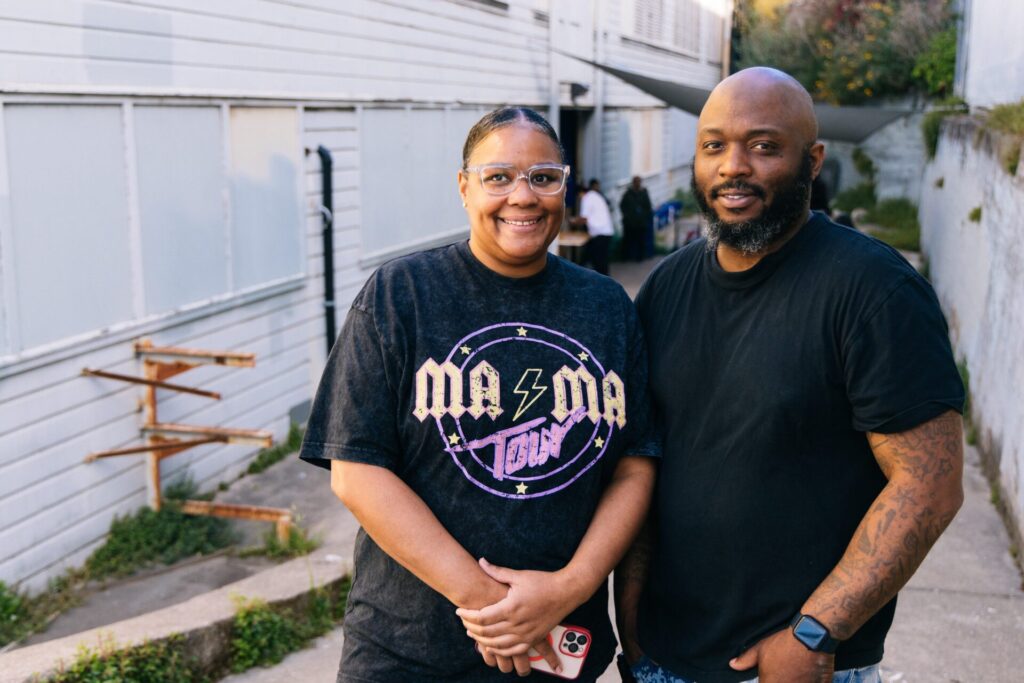
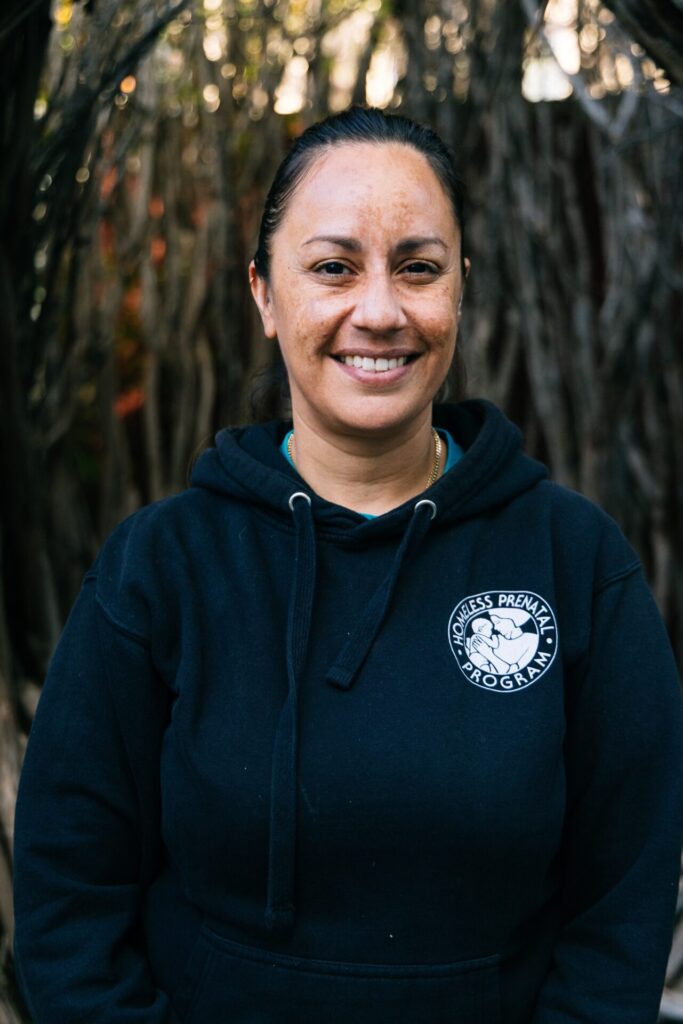
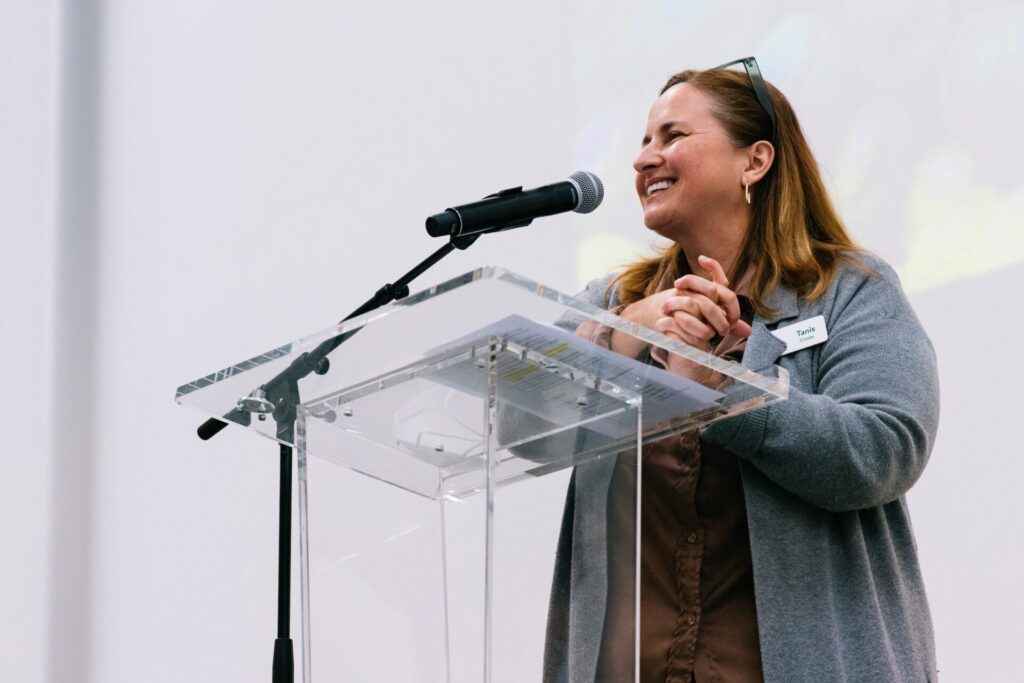
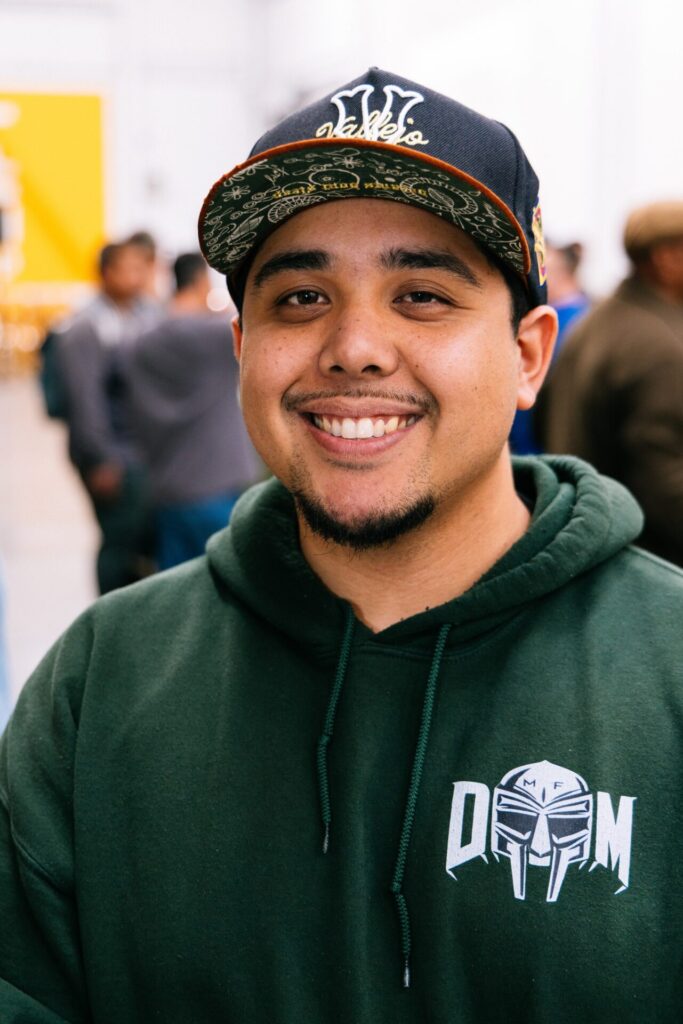
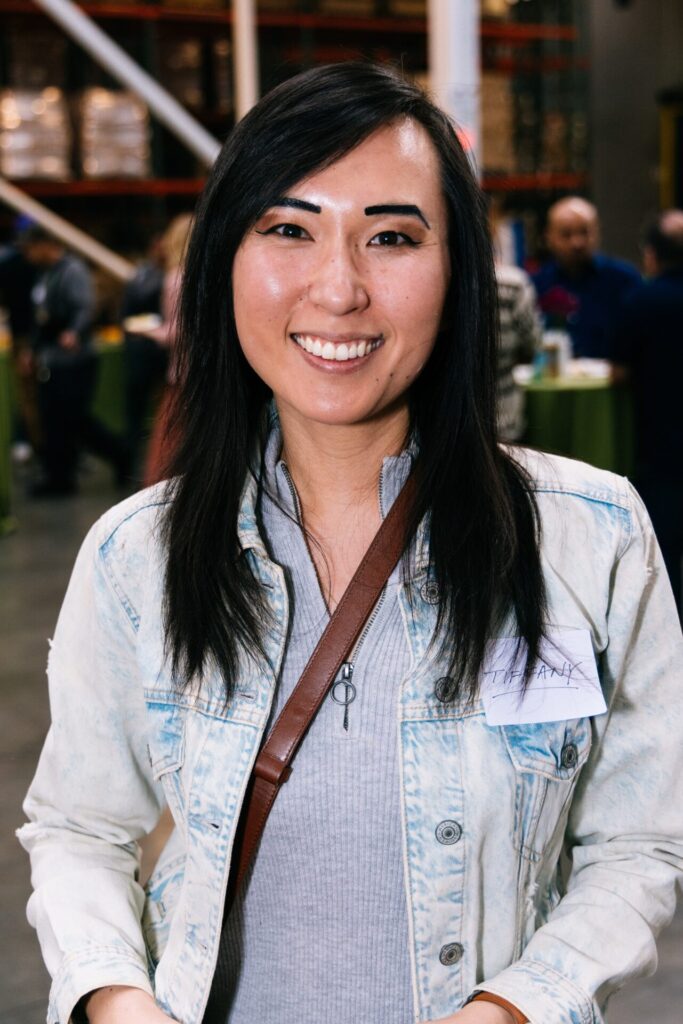

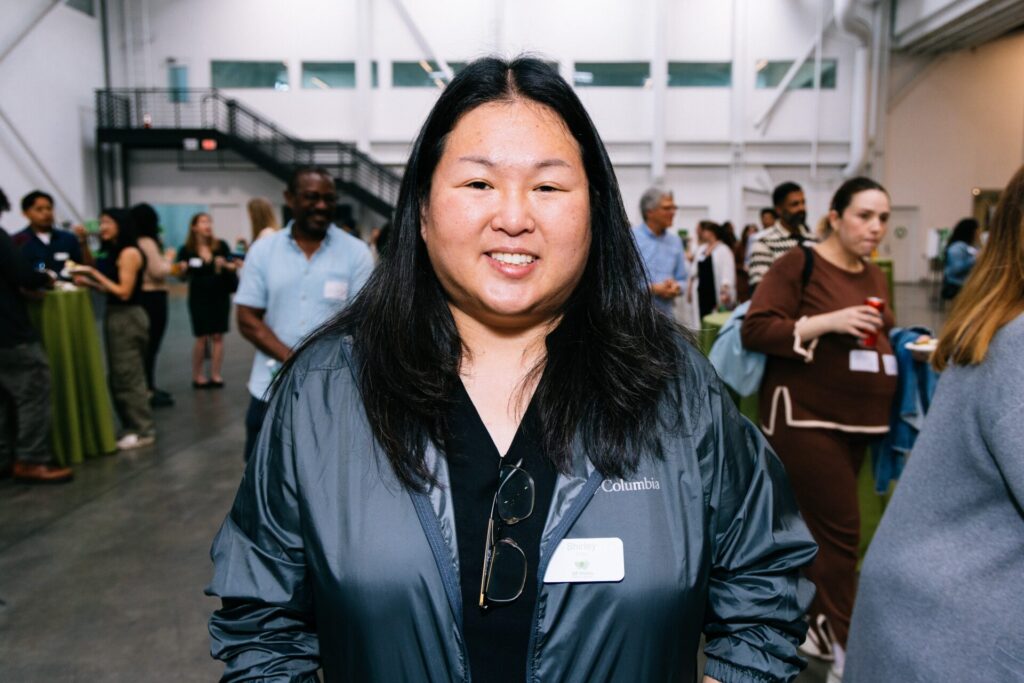
 benefits. For families with young children, the cost of diapers adds up quickly. Too often, parents are forced to choose between diapers and food. That’s where CalFresh, the Food Bank, and community partners like Homeless Prenatal Program (HPP) come together. The San Francisco Diaper Bank, a partnership between the SF Human Services Agency and family resource centers like Homeless Prenatal Program, offers a free monthly supply of diapers to CalFresh families with children under two. At HPP, a long-standing Food Bank partner, families can pick up diapers and healthy groceries in one stop. It’s a model of seamless support that strengthens the safety net and addresses the root causes of hunger.
benefits. For families with young children, the cost of diapers adds up quickly. Too often, parents are forced to choose between diapers and food. That’s where CalFresh, the Food Bank, and community partners like Homeless Prenatal Program (HPP) come together. The San Francisco Diaper Bank, a partnership between the SF Human Services Agency and family resource centers like Homeless Prenatal Program, offers a free monthly supply of diapers to CalFresh families with children under two. At HPP, a long-standing Food Bank partner, families can pick up diapers and healthy groceries in one stop. It’s a model of seamless support that strengthens the safety net and addresses the root causes of hunger. One way we strengthen the region’s CalFresh outreach is by providing training opportunities for our partners who make expanding CalFresh enrollment possible.
One way we strengthen the region’s CalFresh outreach is by providing training opportunities for our partners who make expanding CalFresh enrollment possible.
Share